
Author: iot101 Comic
IoT Think Tank Original
Reprint must indicate the source and origin
—— [Guide] ——
iot101 Comic: A good science popularization article turned into a romance drama (covering face)
Hi everyone, I know you have been waiting for iot101 Comic for a long time!
Last week’s comic introduced the most popular NB-IoT protocol in Low Power Wide Area Network (LPWAN), and many netizens said it was thrilling (although many data were incorrect, covering face). The reading volume also surged to over 80,000. Click here to review: “A Comic to Tell You: Besides WiFi and Bluetooth, What Can the Recently Popular NB-IoT Do?”
Due to the positive feedback, iot101 Comic is in a great mood and today releases the popular story of our baby LoRa~
PS. Actually, the story of LPWAN is not something that can be told in a few comics; let’s get to know these babies and slowly understand~
In the previous comic, we talked about the growth journey of baby NB-IoT. In fact, in the field of LPWAN, many babies have already gone out to make money (though it’s mostly done privately by some companies).
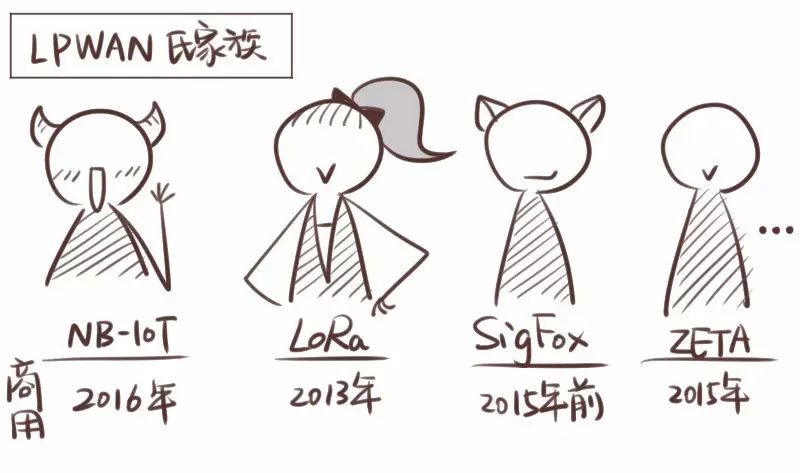
For example, LoRa, which has been commercially available since 2013, France’s Sigfox, and ZETA developed by domestic company Zongxing Technology, etc. (Don’t ask me why LoRa is a girl; anyway, today she is the female lead).
What? You still don’t know what Low Power Wide Area Network (LPWAN) is?
Come on, a big Baidu Encyclopedia slap in the face must feel great (click to see a larger image):

Since the “WA” in LPWAN means wide area, it will inevitably involve network operations. Therefore, LPWAN networks are deployed by telecom operators or specialized IoT operators, just like GG babies (2G, 3G, 4G).
WiFi and Bluetooth, along with GG babies, mostly work on phones and computers and haven’t really interacted with other things.
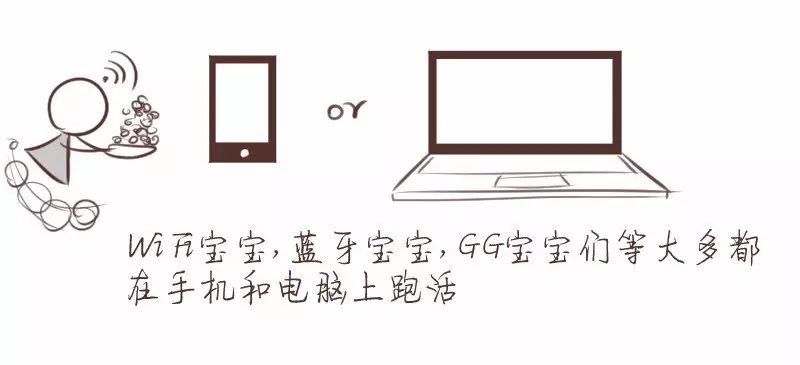
However, the emergence of LPWAN has extended communication distances, greatly expanding the demand for network connections. With the concept of the Internet of Things where everything is connected, as long as we make some small modifications to various infrastructures in cities, they can all start talking (after many years of being silent).
Moreover, LPWAN is much cheaper and more convenient than GG babies!!! A single battery can last for several years!!!
All urban infrastructures want to connect to the internet, leading to the following scenarios:
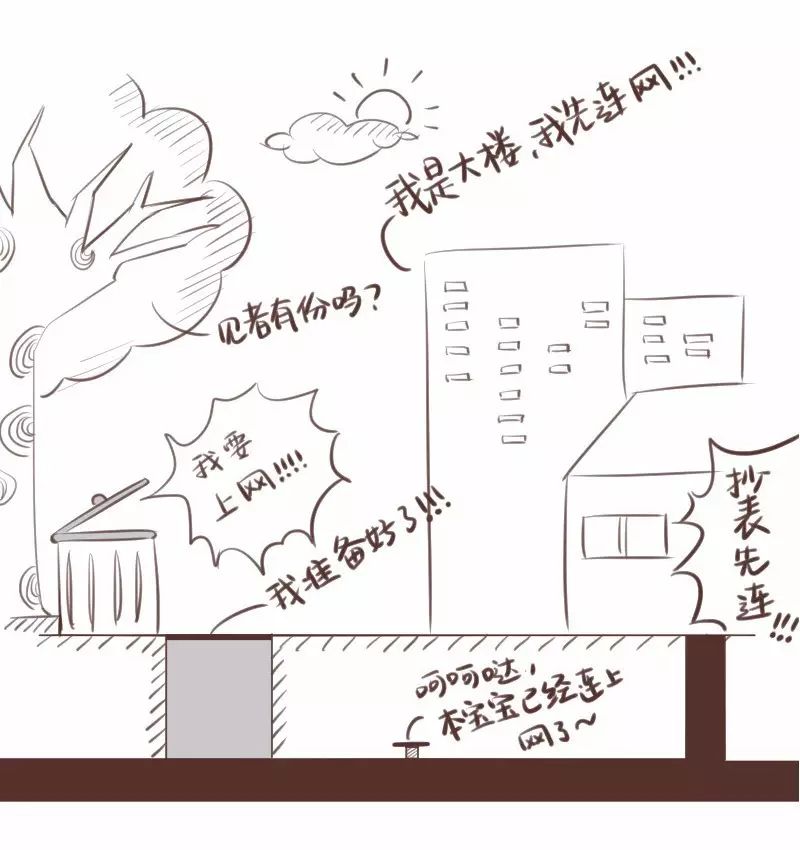
Building: I am a building, and I have a huge demand for networking with water meters, electric meters, and other devices inside.
Residential Building: Everything for the people; of course, the household meters should be connected first!
Trash Can: I want to go online! The previous comic said that if I don’t connect to the internet, it will harm the environment!
Manhole Cover: I am the underground hero scattered all over the city; let me connect to the internet, and the benefits will be great.
Underground Water Valve: Haha, in some cities, I have been connected for a long time.
Tree: Is there a share for those who see me?
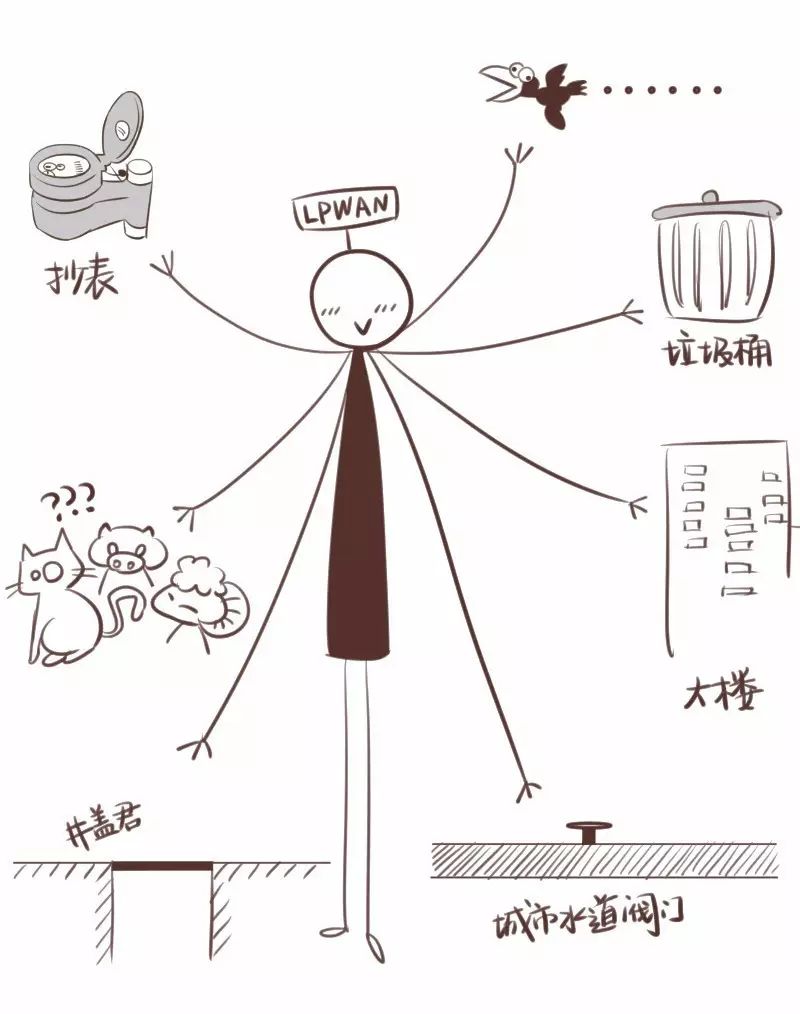
LPWAN babies are mainly connected to urban infrastructure “things” such as electric and water meters, trash cans, etc. Therefore, LPWAN babies have a high-cold title called: IoT Dedicated Network.
Authoritative institutions predict: By 2020, there will be billions of IoT devices connected, and LPWAN technology is one of the most far-reaching trends in the IoT.
So, let’s take a look at what LPWAN babies can specifically do?

Underground Water Pipe: (grabbing the hand of LPWAN baby)
“Quick! Tell headquarters!! I have a leak!!!”

Trash Can: (shyly)
“Please tell the street cat that I have fresh leftovers to eat~ I have the fish bones it loves.”

Justice Closet: “Quick, tell the male owner! Quick, tell the male owner! Quick, tell the male owner!!!”
Of course, this is purely for humor (covering face).
Due to LPWAN’s three main characteristics of “long-distance communication,” “low-speed data transmission,” and “low power consumption,” it is very suitable for IoT applications that require long-distance transmission, very small communication data, and long-term battery operation.

LPWAN babies are most suitable for two types of IoT applications:
One type is fixed-location, relatively concentrated scenarios, such as smart water meters inside buildings, warehouse management, or other equipment data collection systems.
Although GG babies can be applied in these areas, their signal penetration is very weak! They lose signal just by entering an elevator.
The other type is long-distance applications that require battery power, such as smart parking, asset tracking, and geological hydrological monitoring. GG babies can also be used in this part, but they consume too much power! (high power consumption) The public says they cannot afford to raise them~
Getting to the point, in last week’s comic we talked about the big cuteness of the LPWAN family, the growth journey of baby NB-IoT, and today we will talk about the second cuteness of their family: baby LoRa!

LoRa = Long Range, a type of LPWAN technology released by Semtech.
Don’t be fooled by her being the second child in the family; she has actually been commercially available long before the big baby NB-IoT, and her supporters have formed the LoRa Alliance to support her growth.
There isn’t much information about baby LoRa online, and the content is also quite technical, which is related to her origins.
Initially, she was just a private small wireless technology, lacking the technical foundation for large-scale promotion, still a little baby, but her international alliance daddy loves her very much~

The international LoRa Alliance launched the standard technology for wireless connections based on the LoRa protocol—LoRaWAN. The launch of this standard technology has promoted the large-scale networking of LoRa technology. Currently, several companies in China are also promoting the development of LoRaWAN technology.
Under the nurturing of her daddy, LoRa has finally grown into a graceful… big baby (??), and many enterprises and governments are optimistic about her.
LoRa International Alliance Daddy: The baby has finally grown up!

However, compared to the big baby NB-IoT, baby LoRa is more suitable for working in some enterprise private networks. Especially in China, she cannot roam freely like baby NB-IoT.

Baby NB-IoT: Want to go out and play?
Baby LoRa: No way…
So the question arises: What are the differences between baby LoRa and big baby, both members of the LPWAN family?
This brings us to the difference between LoRa and NB-IoT—
First, let’s popularize that the GG babies running outside all have their own fixed dedicated tracks: licensed tracks.
GG babies can run smoothly on this track without interference from other communication babies, ensuring that the data in their hands is quickly delivered to the designated location.

However, if unauthorized communication babies intrude into GG babies’ dedicated tracks, it will disrupt GG babies’ order, leading to the following consequences—
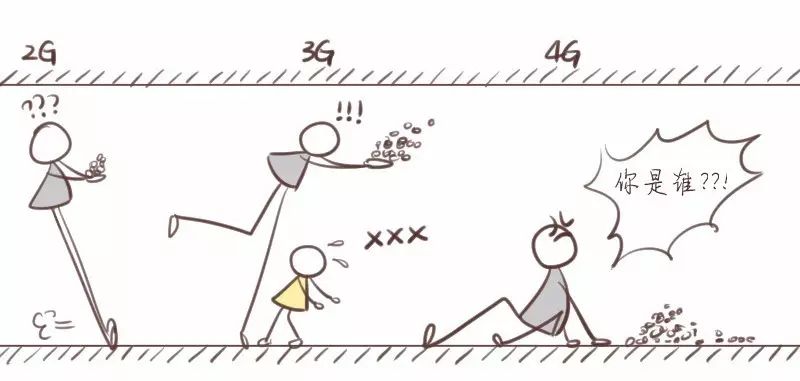
Fallen GG babies: (angrily) Who are you?!! My data fell on the ground!!
So other communication babies can’t just barge in; in serious cases, they can be taken away by the police! So they can only run in the free frequency bands outside.
Baby NB-IoT is born with a golden spoon; it has the attribute of a licensed track from birth and is a treasure in the hands of the government, operators, and equipment vendors.

Obsessed parents: Wow! This child is so good-looking from a young age; who does it take after?
Therefore, baby NB-IoT can have its own dedicated licensed track just like GG babies.
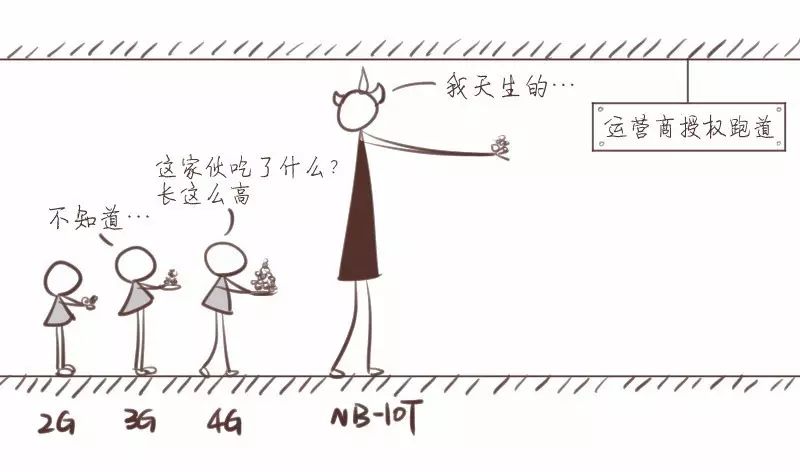
4G baby: What did this guy eat to grow so tall?
3G baby: I don’t know…
2G baby: (confused)
However, after entering China, baby LoRa has not received enough attention from operators. Such origins determine that baby LoRa does not have its own dedicated track and can only operate in free tracks.
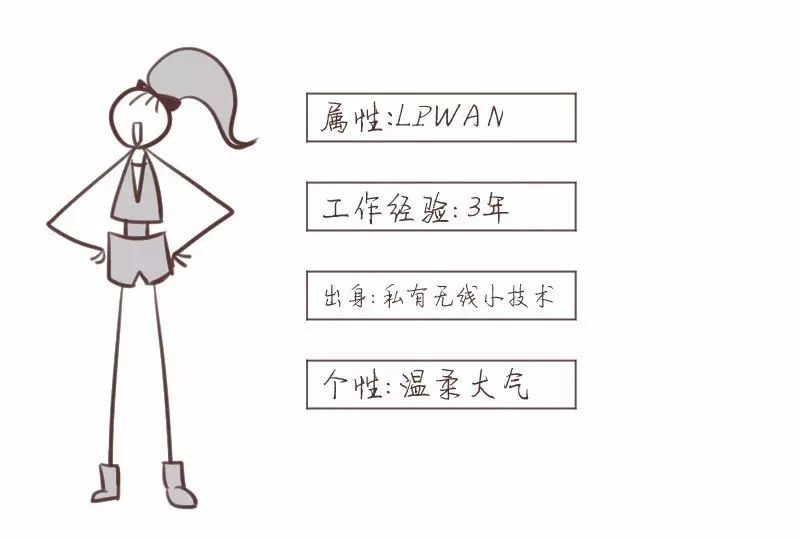
However, baby LoRa has been in the field for many years. Although her background is not as strong as that of baby NB-IoT, she has her own strengths:
Her sensitivity is very high, anti-interference ability is strong, and she is small and flexible, making her more suitable for working in specific enterprise private networks.
As a small wireless technology, LoRa has significant technical advantages over traditional small wireless technologies such as ZigBee and 2.4G in terms of low power consumption, wide transmission distance, strong signal penetration, and high sensitivity. Therefore, for specific projects and enterprise private network needs, the LoRa private protocol is more flexible and cost-effective than LoRaWAN. However, the lack of a unified standard will greatly limit the large-scale application of the technology. For customers, the lack of standardization will also cause many troubles, such as uneven communication quality of products, which increases the difficulty of large-scale promotion of the technology.
If we make an analogy, baby NB-IoT is like the mobile phones we use now, while baby LoRa is like walkie-talkies in specific environments.
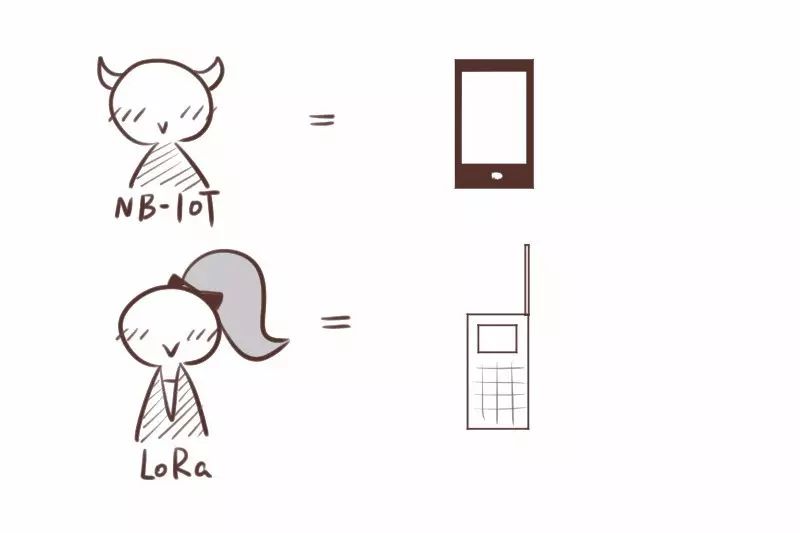
Of course, it cannot be denied that the emergence of baby NB-IoT has attracted a lot of public attention, and the once-glorious baby LoRa has been neglected by many people, with many not even recognizing her.
LoRaWAN has a unified standard, making the application and promotion of technology more convenient. However, it seems that operators are more inclined to use NB-IoT technology, and the extent to which LoRaWAN can advance still has a lot of uncertainty.

Baby LoRa: I’m just lonely~
(However, many domestic manufacturers are still very accustomed to using baby LoRa.)


Although baby NB-IoT is the darling of the domestic market, its emergence does not mean that baby LoRa is neglected.
She can just hand over her long-distance errands to the big baby and focus on doing some internal network information transmission work for enterprises and communities, assisting the big baby to build a better smart city~

So, please take care of baby LoRa~

Previous Hot Articles (Click the article title to read directly):
-
“A Comic to Tell You: Besides WiFi and Bluetooth, What Can the Recently Popular NB-IoT Do?”“
-
“Quietly Creating an IoT Platform, Is Nokia Trying to Make a Fortune Silently?”
-
“23 Disruptive Technologies We Will See in Our Lifetime”
-
“I Am Not Unconvinced by the View That Smart Hardware Is Dead”
-
“McKinsey’s Heavy Report: How Can Enterprises Tap Into the Value of ‘Industry 4.0’? (Collection Edition)”
-
“Smart Home Platform Strategy of Giants Encountering Obstacles, Opportunities Seen by Small and Medium Players”

Hi, I am iot101!
Regarding the Internet of Things,
Every word I say is not nonsense;
If you encounter IoT-related questions,
Don’t call 110,
Just come to iot101!